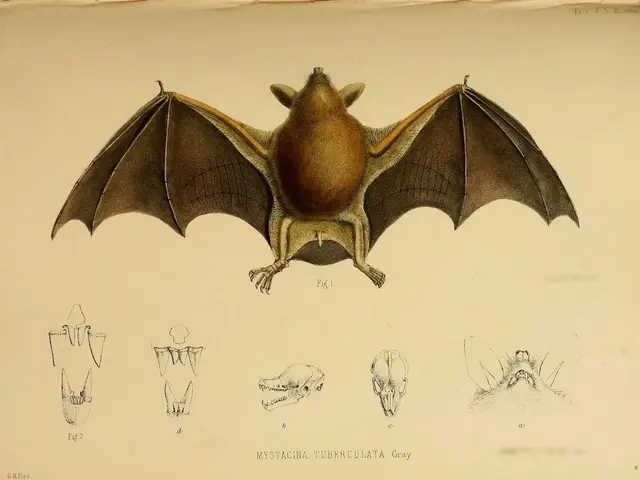Excavating the Exotic: A Glimpse into the Gruesome "Hell Ants"
Ancient Ant Specimen's Unusual Mandibles Held Prey, Scientists Assert
Ever heard of the infamous "Hell Ants"? Hailing from the Cretaceous period, these subterranean terrors were renowned for their bloodthirsty, grotesque jaws - a sight that would make any predator blush! With scythe-like mandibles and menacing horns adorning their faces, these extinct critters were as fearsome as their name implies.
Recently, in the heart of Brazil at the Museum of Zoology, University of São Paulo, researchers stumbled upon a jaw-dropping discovery - the smallest but deadliest ant known to man, dated back a cool 113 million years! Rising from the depths of the Earth like a phantom from Hell, this ancient ant joins the elite ranks of the Haidomyrmecinae, or "Hell Ants," a subfamily that once chomped their way across the globe.
This ancient ant, christened "Vulcanidris cratensis," shares a chilling resemblance to its chalky kin from Myanmar and various Cretaceous-era locales like France and Canada. The V. cratensis unearthed in Brazil reveals new insights into the rise, dominance, and ultimate fall of the Hell Ants.
Marking the Origins
The Vulcanidris cratensis is a startling relic of the distant past, casting light on the early days of the Hell Ants. Studying this ancient armor-plated warrior revealed its startling mandibles, which jutted forward, resembling a sword held at the ready. Modern ants, by comparison, boast mandibles that move sideways.
The researchers suggest that these bizarre, specialized jaws hint at the rapid evolution and intricate adaptations that ants developed in their quest to dominate the Cretaceous ecosystem. The Hell Ants, meanwhile, offer a glimpse into a time when predators were smaller, but no less terrifying.
World Conquest and Evolutionary Brilliance
The discovery of the V. cratensis supports the theory that the Hell Ants were already spreading their terror across the globe 113 million years ago. This finding raises questions about the speed at which ants evolved and diversified during the Cretaceous period. Moreover, the Hell Ants' unique elongated mandibles and horn-like protrusions represent a fascinating example of the evolutionary brilliance that led to the success of ants as one of the most dominant species on Earth.
A Brush with Extinction
As fierce and formidable as they were, the Hell Ants were no match for the eventual end of the Cretaceous period. The exact causes of their demise remain a mystery, but the V. cratensis offers a tantalizing glimpse into the past, revealing the pressures that shaped the course of ant evolution.
The Vulcanidris cratensis study joins an ever-growing body of research, painting a vivid picture of the ancient world and the role that such peculiar predators played in shaping our planet's history. Who knows what other lost species await us in the shadows of time? Time to strap on our archeological gear and explore further, fearless ant enthusiasts!
- The discovery of the Vulcanidris cratensis, a tiny but formidable ant dating back 113 million years, underscores the influence of technology, as researchers used advanced imaging and analysis tools to study this ancient species.
- As science continues to unlock the secrets of the past, sites like the Museum of Zoology, University of São Paulo play a crucial role in preserving and studying fossils, with their findings offering valuable insights into the evolution of life on Earth, such as the extinct Hell Ants.
- The striking features of the Hell Ants, with their elongated mandibles and horn-like protrusions, represent a fascinating example of environmental-science adaptations, demonstrating how these animals were able to thrive in their ecosystems during the Cretaceous period.
- The Vulcanidris cratensis study serves as a reminder of the vast, unexplored world that still exists within our planet, with new discoveries in space-and-astronomy and environmental-science awaiting us, revealing untold stories about our past, present, and future on Earth and beyond.




